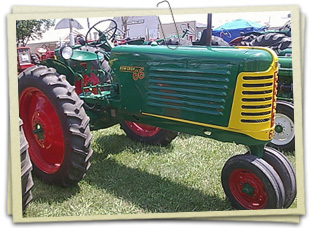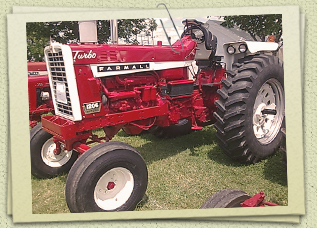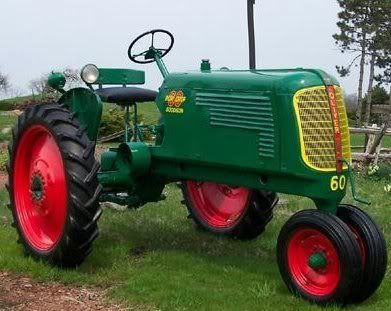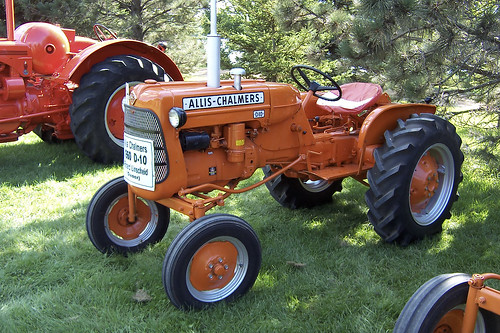By the end of the 1930s, Oliver’s large tractors were ranking nicely among competitors, giving them a good deal of success. Oliver had not yet built a small tractor, however, so they were losing out on what was a very quickly growing segment of the agriculture market. Allis-Chalmers, John Deere, and Farmall had done very well in the “small tractor” category, and Oliver wanted to begin competing.
read more »
Allis Chalmers introduced their Model D10 farming/agriculture tractor in 1959. The D10 was produced for eight years, with a total of about 9,100 being manufactured. The D10 was a two-wheel drive tractor with a four-speed sliding gear transmission. At the D10’s start, it produced about 24HP. After three series updates, however, the horsepower had been increased to 31HP.
read more »
 Oliver Farm Equipment began producing the Model 66 row crop tractor in 1949, and it had a 6 year reign. This two-wheel drive tractor had a six forward-speed transmission with two reverse speeds. Farmers had their choice of either a gasoline-ran row crop tractor or diesel-ran standard tractor. Both Oliver-Waukesha engines were Vertical I-head engines with four cylinders.
Oliver Farm Equipment began producing the Model 66 row crop tractor in 1949, and it had a 6 year reign. This two-wheel drive tractor had a six forward-speed transmission with two reverse speeds. Farmers had their choice of either a gasoline-ran row crop tractor or diesel-ran standard tractor. Both Oliver-Waukesha engines were Vertical I-head engines with four cylinders.
A couple of big differences between the two tractors were the weight and compression ratio. The row crop 66 weighed in at 3,193 pounds, and the standard diesel model weighed 3,795 pounds. The gasoline engine had a compression ratio of 6.75 to 1, while the diesel engine had a ratio of 15.5 to 1. When comparing horsepower, the gasoline-powered 66 got a max belt power of 24.9hp, and the diesel-powered engine had 25.03hp.
read more »
 1967 was a big year for International Harvester, as well as their Farmall brand. This year brought about the release of their first tractor that could produce more than 100 horsepower: the 1206 Turbo. The IH/Farmall 1206 Turbo had a powerful PTO horsepower output of 112hp.
1967 was a big year for International Harvester, as well as their Farmall brand. This year brought about the release of their first tractor that could produce more than 100 horsepower: the 1206 Turbo. The IH/Farmall 1206 Turbo had a powerful PTO horsepower output of 112hp.
While the vast majority of these were row-crop tractors produced under the Farmall name, over a thousand were “wheatland” models with a larger platform and heavier drawbar, and were produced with the IH name. Both models had basically the same engine, with the only difference being the Bore/Stroke. The Farmall engine had a Bore/Stroke of 4.321×4.625 inches, while the IH engine’s Bore/Stroke was 4.125×4.25 inches.
read more »




